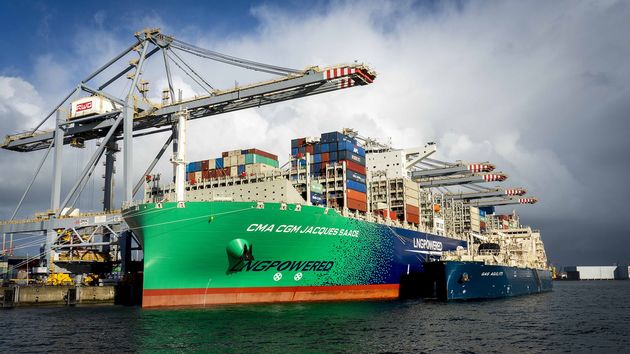
-
Port of Rotterdam says a study it commissioned shows ocean liners can evade Emission Trading System costs by adding an extra route or calling at a neighboring non-EU port instead of sailing directly to an EU port
-
The port urges European policymakers to assess the impact on EU ports of cost-efficiency of port evasion by shipping lines
-
European Commission wants to include shipping lines in Phase 4 of EU ETS from 2021 to 2030 to achieve a 55% greenhouse gas emission by the end of that period
A study commissioned by Port of Rotterdam has found shipping lines can avert extra costs relating to the European Union Emissions Trading System if they add a port to their route or call at a neighboring non-EU port instead of sailing directly to an EU port.
The study assessed the impact of a proposed extension of the EU ETS on the maritime sector and, subsequently, on the competitive position of seaports.
The Port of Rotterdam, the 10th largest globally with throughput of 14.35 million TEUs in 2020, commissioned research and consultancy firm CE Delft to conduct the investigation. The findings were released in March.
As a result, the port is asking European policymakers to make a broad impact assessment of the effects of a shipping ETS on European ports before including liners in the EU ETS.
“Only if shipping actually pays for the pollution it causes, more sustainable shipping can be achieved,” the port said in a press release on March 24.
The port said the proposed extension of the ETS to shipping must take into account potential evasive behavior and its impact on the competitive position of EU and non-EU ports.
The ETS is a cornerstone of the EU’s policy to combat climate change and its key tool for cutting greenhouse gas emissions cost-effectively.
The EU intends to achieve climate neutrality by 2050 with an intermediate target of an at least 55% net reduction in greenhouse gas emissions by 2030.
The European Commission required industries and aircraft operators to be covered by EU ETS to have an approved monitoring and reporting plan for emissions. They earn credits for each ton of emitted carbon dioxide removed or reduced from the atmosphere by complying with EU emission standards.
In its proposal in July last year to revise the EU ETS, the European Commission sought to include shipping. Following the proposal, CE Delft has investigated the cost-benefit analysis for five scenarios of potential port evasion.
These scenarios include, for example, adding an extra port outside the EU to the trading route, or sailing to a neighboring non-EU seaport instead of directly to an EU seaport.
The cost-benefit analysis is based on a various costs, such as fuel costs and port call costs, including the ETS price based on a low/average/high estimate.
The study shows when an extra port such as Felixstowe is added on the China-Europe route, there are potentially 18 scenarios where port evasion can be cost-efficient for ships.
This is the case with an average ETS price of €67 (US$73.60). In case of a port shift from the Algeciras port in Spain to Tangiers in Morocco, EU ETS is profitable in 27 of the 36 scenarios that were studied.
CE Delft concludes evasive behavior is realistic, even when the ETS price is relatively low compared with the extra costs of a port call, fuel costs, operational costs, etc.




